While decisions on player and team options for veteran NBA contracts are typically due in June, the deadline to exercise third- and fourth-year team options for players on rookie scale contracts arrives each fall. This year’s deadline for teams to pick up rookie scale options is October 31, 2024.
All the players whose options will be exercised or declined by Oct. 31 are already under contract for the 2024/25 season. Their teams will have to make a decision on whether they want to lock in those players’ contracts beyond the coming season, picking up or turning down team options for the 2025/26 campaign.
For players who signed their rookie scale contracts in 2022 and have already been in the NBA for two years, teams must decide on fourth-year options for 2025/26. For players who just signed their rookie deals last year and only have one season of NBA experience under their belts, teams will already be faced with a decision on third-year options for ’25/26.
In many cases, these decisions aren’t difficult ones. Rookie scale salaries are affordable enough that it usually makes sense to exercise most of these team options, even if a player isn’t a key cog on the roster. And for those players who do have a significant role on a team’s roster, the decision is even easier — it’s not as if the Hornets will consider turning down their option on Brandon Miller, for instance.
Still, we’ll wait for a trusted reporter, the NBA, a player (or his agent), or a team itself to confirm that an option is indeed being exercised or declined, and we’ll track that news in this space.
Listed below are all the rookie scale decisions for 2025/26 team options that clubs must make by Oct. 31. This list will be updated through the deadline as teams’ decisions are reported and announced. The salary figures listed here reflect the cap hits for each team.
Here are the NBA’s rookie scale team option decisions for 2025/26 salaries:
Atlanta Hawks
- Dyson Daniels (fourth year, $7,707,709): Exercised
- David Roddy (fourth year, $4,831,766): Declined
- Kobe Bufkin (third year, $4,503,720): Exercised
Boston Celtics
- None
Brooklyn Nets
- Noah Clowney (third year, $3,398,640): Exercised
- Dariq Whitehead (third year, $3,262,560): Exercised
Charlotte Hornets
 Brandon Miller (third year, $11,968,800): Exercised
Brandon Miller (third year, $11,968,800): Exercised- Mark Williams (fourth year, $6,276,531): Exercised
- Nick Smith Jr. (third year, $2,710,680): Exercised
Chicago Bulls
- Dalen Terry (fourth year, $5,399,118): Exercised
Cleveland Cavaliers
- None
Dallas Mavericks
- Dereck Lively (third year, $5,253,360): Exercised
- Olivier-Maxence Prosper (third year, $3,007,080): Exercised
Denver Nuggets
- Christian Braun (fourth year, $4,921,797): Exercised
- Peyton Watson (fourth year, $4,356,476): Exercised
- Julian Strawther (third year, $2,674,200): Exercised
Detroit Pistons
- Jaden Ivey (fourth year, $10,107,163): Exercised
- Ausar Thompson (third year, $8,775,000): Exercised
- Jalen Duren (fourth year, $6,483,144): Exercised
- Wendell Moore (fourth year, $4,574,283): Declined
- Marcus Sasser (third year, $2,886,720): Exercised
Golden State Warriors
- Brandin Podziemski (third year, $3,687,960): Exercised
Houston Rockets
- Jabari Smith (fourth year, $12,350,392): Exercised
- Amen Thompson (third year, $9,690,600): Exercised
- AJ Griffin (fourth year, $5,967,137): Waived
- Tari Eason (fourth year, $5,675,766): Exercised
- Cam Whitmore (third year, $3,539,760): Exercised
Indiana Pacers
- Bennedict Mathurin (fourth year, $9,187,573): Exercised
- Jarace Walker (third year, $6,665,520): Exercised
- Ben Sheppard (third year, $2,790,720): Exercised
Los Angeles Clippers
- Kobe Brown (third year, $2,654,880): Exercised
Los Angeles Lakers
- Jalen Hood-Schifino (third year, $4,064,640): Declined
Memphis Grizzlies
- Jake LaRavia (fourth year, $5,163,127): Declined
Miami Heat
- Nikola Jovic (fourth year, $4,445,417): Exercised
- Jaime Jaquez (third year, $3,861,600): Exercised
Milwaukee Bucks
- MarJon Beauchamp (fourth year, $4,781,276): Declined
Minnesota Timberwolves
- None
New Orleans Pelicans
- Jordan Hawkins (third year, $4,741,320): Exercised
New York Knicks
- None
Oklahoma City Thunder
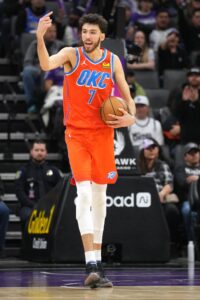 Chet Holmgren (fourth year, $13,731,368): Exercised
Chet Holmgren (fourth year, $13,731,368): Exercised- Ousmane Dieng (fourth year, $6,670,882): Exercised
- Jalen Williams (fourth year, $6,580,997): Exercised
- Cason Wallace (third year, $5,820,240): Exercised
Orlando Magic
- Paolo Banchero (fourth year, $15,334,769): Exercised
- Anthony Black (third year, $7,970,280): Exercised
- Jett Howard (third year, $5,529,720): Exercised
Philadelphia 76ers
- None
Phoenix Suns
- None
Portland Trail Blazers
- Scoot Henderson (third year, $10,748,040): Exercised
- Shaedon Sharpe (fourth year, $8,399,983): Exercised
- Kris Murray (third year, $3,132,000): Exercised
Sacramento Kings
- Keegan Murray (fourth year, $11,144,093): Exercised
San Antonio Spurs
- Victor Wembanyama (third year, $13,376,880): Exercised
- Jeremy Sochan (fourth year, $7,096,231): Exercised
- Malaki Branham (fourth year, $4,962,033): Exercised
- Blake Wesley (fourth year, $4,726,328): Exercised
Toronto Raptors
- Ochai Agbaji (fourth year, $6,383,525): Exercised
- Gradey Dick (third year, $4,990,560): Exercised
Utah Jazz
- Taylor Hendricks (third year, $6,127,080): Exercised
- Walker Kessler (fourth year, $4,878,938): Exercised
- Keyonte George (third year, $4,278,960): Exercised
- Brice Sensabaugh (third year, $2,693,760): Exercised
Washington Wizards
- Bilal Coulibaly (third year, $7,275,600): Exercised
- Johnny Davis (fourth year, $6,746,229): Declined
- Patrick Baldwin (fourth year, $4,420,156): Declined
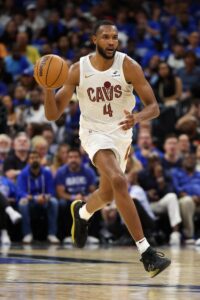 Signed
Signed 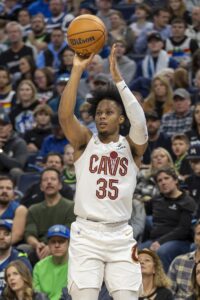 One of those two could be
One of those two could be 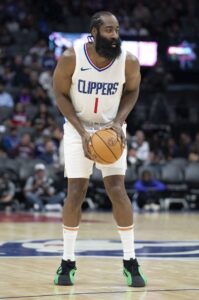
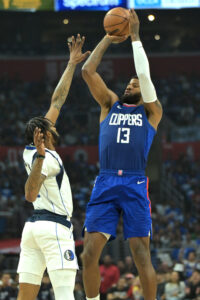 While the new second tax apron likely played a part in the Clippers’ decision to draw a hard line in their negotiations with George, the fact that the team had won just three total playoff games – and no playoff series – in the past three years presumably factored into that decision too.
While the new second tax apron likely played a part in the Clippers’ decision to draw a hard line in their negotiations with George, the fact that the team had won just three total playoff games – and no playoff series – in the past three years presumably factored into that decision too.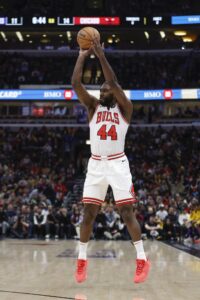
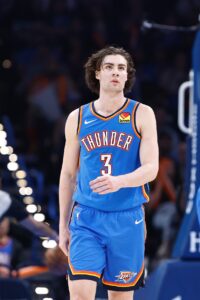 The most interesting move of the Bulls’ summer was trading defensive ace
The most interesting move of the Bulls’ summer was trading defensive ace 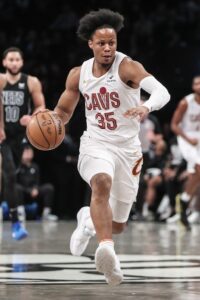 As our Luke Adams
As our Luke Adams